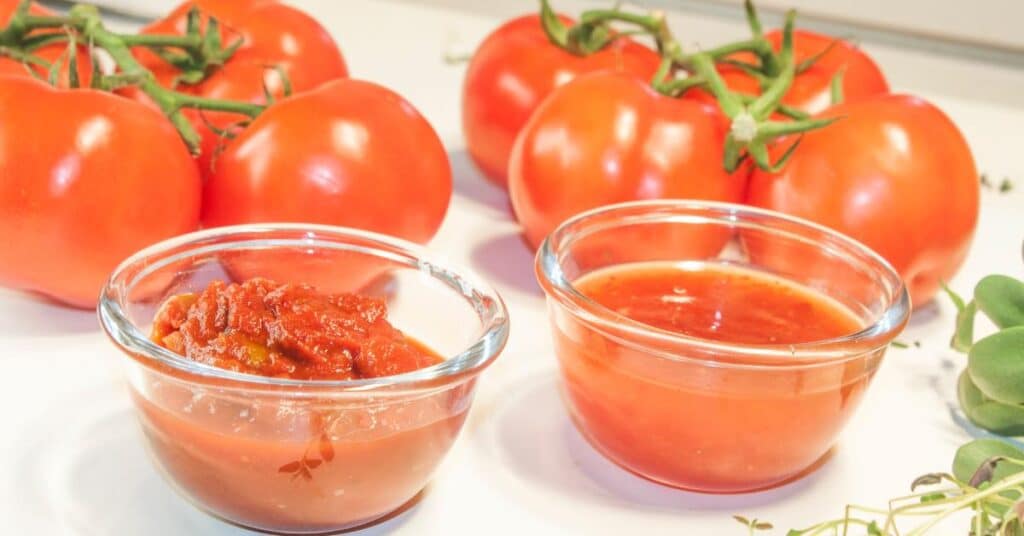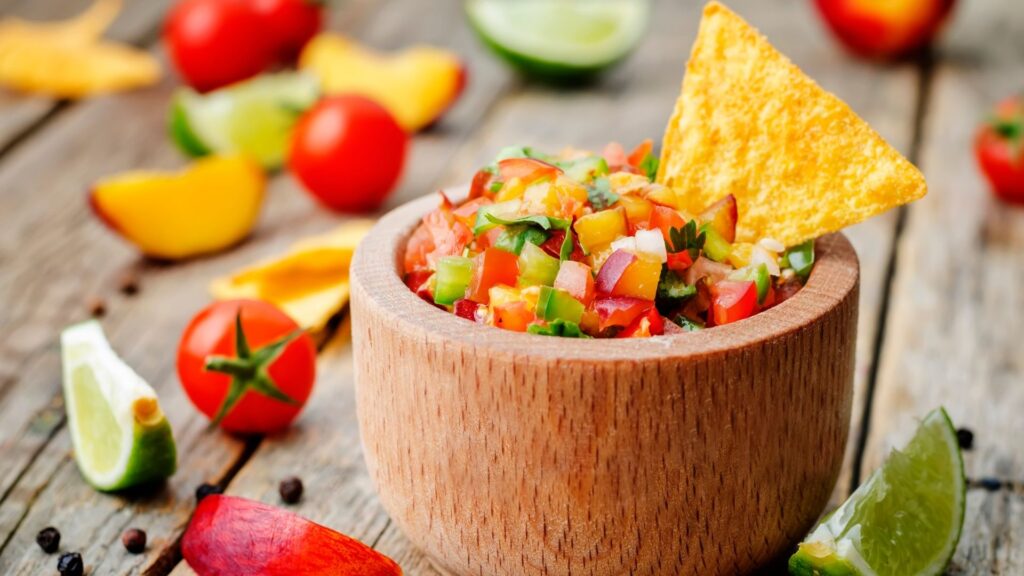
When exploring the world of spicy food and flavorful Mexican condiments, you might come across two popular options: salsa and Picante sauce. Though they may appear similar, there are subtle differences between the two that distinguish them from each other. In this article, we will delve into the nuances that set these condiments apart.
Salsa, which means “sauce” in Spanish, has been a staple in Mexican cuisine for centuries and consists of chopped tomatoes, chili peppers, onions, cilantro, garlic, and a variety of fresh herbs and spices. In its most traditional form, salsa’s fresh ingredients are hand-chopped, giving it a chunky and rustic texture. This dynamic condiment can be used as a dip, a topping, or even a marinating base for dishes.
Picante sauce features a smoother and more pureed consistency, often achieved through the use of a blender or food processor. It is made from some of the same ingredients as salsa, such as tomatoes and onions but gets its signature fiery kick from the addition of spicy red peppers. While also originating from Mexico, Picante sauce is now associated with Tex-Mex cuisine and is frequently used for dipping, topping, and adding extra heat to your favorite dishes.
What is the Difference Between Salsa and Picante Sauce?
Consistency and Texture
Salsa typically has a chunkier texture, which means you can see and taste the individual ingredients, such as onions, peppers, and fresh tomatoes. This makes it ideal for dipping chips or topping dishes. On the other hand, Picante sauce has a smoother consistency. It is more like a sauce, as the name suggests, which means it can be used as a condiment for various dishes, a topping for tacos and burritos, or even as a cooking ingredient.
Ingredients
Salsa and Picante sauce share similar ingredients, but here is what sets them apart.
Salsa: Usually made with fresh, uncooked ingredients, which allows the distinct flavors to shine through. Common additions include corn, beans, and bell peppers.
Picante Sauce: Contains mostly cooked ingredients, which creates a smoother texture and a rich, deep flavor similar to hot sauce. The recipe often requires simmering the ingredients together, allowing the flavors to meld and further develop.
Flavor Profiles
Salsa: Since it mostly consists of uncooked ingredients, the flavors in salsa tend to be brighter and more vibrant. Each component retains its distinct taste, creating a symphony of flavors in your mouth. However, the spiciness or heat level varies depending on the type of peppers used.
Picante Sauce: The heat level in picante sauce is usually higher due to the use of more hot peppers, especially jalapenos. As a result, it has a spicier, more intense flavor. The cooked ingredients also contribute to the depth of flavor, making it a bit more complex than salsa.
Popular Dishes with Salsa

Salsa, a versatile condiment in Mexican cuisine, can elevate the taste of various dishes. You might enjoy it as a topping on tacos, where its fresh and tangy flavors complement the meat and vegetables. It’s also an excellent addition to burritos, providing a burst of flavor and moisture to the mix of rice, beans, and other fillings.
Using salsa as a dip with chips is a popular choice, especially when you’re looking for a quick snack or appetizer. Its variety of spices and ingredients can also make nachos more flavorful and exciting, transforming them into a customizable and satisfying dish.
Another dish where salsa shines is enchiladas. You can pour it over the rolled tortillas filled with meats, cheese, and beans to create a rich and cohesive meal that highlights the flavors of Mexican cuisine.
Popular Dishes with Picante Sauce
Picante sauce, a spicier and usually cooked version of salsa, offers a different kind of heat that can enhance specific dishes. This sauce is perfect for adding a bold and intense flavor to foods like tacos and burritos, especially if you’re a fan of spicier condiments. Due to its thicker consistency, Picante sauce also works well as a dip for your favorite chips.
When you want to spice up nachos, Picante sauce can be your go-to. Just drizzle it over the tortilla chips, cheese, and beans for an extra kick. You can also add this sauce to your favorite enchiladas, giving them a zestier twist and a deeper taste.
Common Varieties of Salsa and Picante Sauce


Salsa Varieties
When it comes to salsa, there are several popular varieties to choose from. The most common type is tomato-based salsa, which typically includes tomatoes, onions, and jalapenos. It comes in mild salsa and hot salsa, which vary in heat levels due to the quantity of jalapenos added.
Another popular salsa variety is salsa verde or green salsa. This type is made with tomatillos instead of tomatoes, giving it a tangy, fresh flavor. Salsa verde often includes ingredients such as cilantro, lime juice, and garlic.
Salsa roja is a red sauce made with dried chilies, tomatoes, and garlic. It has a smoky, savory taste and can range in heat depending on the type of chili used.
Pico de gallo is a fresh, chunky salsa that’s perfect for topping tacos or as a standalone snack. It’s made with tomatoes, onions, jalapenos, cilantro, and lime juice. The difference between pico de gallo and other salsas lies in the texture – pico de gallo ingredients are typically finely chopped, while other salsas may be more blended or cooked.
Picante Varieties
Picante sauce is thinner and smoother in texture. This is because it is often pureed or blended more thoroughly than salsa. There are various types of Picante sauce, ranging from mild to hot.
A simple red picante sauce can be made with tomatoes, onions, and jalapenos. The heat level can be adjusted by adding more or fewer jalapenos to the mix. Red Picante sauce is often used as a dipping sauce or topping for dishes like enchiladas and tacos.
For those who prefer a tangier taste, a green picante sauce is an excellent option. Made with tomatillos, jalapenos, and onions, this picante has a zesty flavor.
FAQs
How long does salsa last in the fridge?
Salsa typically lasts for about 5 to 7 days in the refrigerator if stored properly in an airtight container.
How to make salsa less spicy
There are several ways to make salsa less spicy:
- Add more tomatoes: Tomatoes have a cooling effect and can help to reduce the spiciness of salsa.
- Add more sugar: Sugar can help to balance out the heat in salsa. You can add a little bit of sugar at a time until the desired level of sweetness is achieved.
- Add some acid: Adding acid in the form of lime juice or vinegar can help to cut through the heat of the salsa.
- Add more vegetables: Adding more vegetables like onions, bell peppers, and cucumbers can help to dilute the spiciness of the salsa.
- Remove the seeds and membranes: The seeds and membranes of peppers contain the majority of the heat. Removing them can help to reduce the spiciness of the salsa.
- Use a milder pepper: If you want to make a less spicy salsa, you can use a milder pepper like a poblano or Anaheim pepper instead of a hotter pepper like jalapeño or habanero.



